Articles
One Comment
By Voices
On 22, Jun 2015 | One Comment | In Commemoration | By Voices
Shot at Dawn- Lest We Forget
Central Youth Theatre
Shot at Dawn- Lest we Forget is a Heritage Lottery funded project, by the Central Youth Theatre, that focuses on soldiers who were executed for desertion and “cowardice” during the First World War.
The aim was to produce a short drama film and an exhibition telling the stories of soldiers from the Midlands who were shot at dawn. As well as the executed soldiers themselves, we also wished to look at the effect on their families and to also focus on the soldiers ordered to join the firing parties as their own lives must surely have been altered forever by being ordered to kill one of their own comrades.
We selected four soldiers from the Staffordshire, Warwickshire and Cheshire regiments who would become the focus of the research. A particularly emotional moment during the research period was a visit to the National Archives to view the court martial papers of the four soldiers. It was surreal to hold the documents, with the word “death” written across in capital letters and chilling to think these pieces of paper signalled the end of those men’s lives. The papers for Warwickshire soldier, Private Arthur Earp, even contain a message from Haig himself, refusing a plea for mercy; ‘How can we ever win if this plea is allowed?’ he stated. Another visit made was to the National War Arboretum where each of the 306 executed soldiers has a memorial plaque attached to a post, made all the more sad when you know the tragic stories behind a number of the plaques.
One of the biggest challenges of the research was discovering the stories of soldiers who had been members of the firing parties. It seemed clear it was an order dreaded by soldiers, with accounts of some begging not to be chosen, and when it came to the execution, the firing party would be ordered to face away from the prisoner until the last moment. A pamphlet, written in 1924, contained accounts of those who had been in a firing party or had witnessed an execution, and was created with the intention of bringing about the abolition of the military death penalty. The accounts were all written by those who supported this campaign and there were some harrowing stories of those who had been involved in the executions. For some, the effects this had on those ordered to be involved would have been life long. One soldier, Private Richard Blundell was in a firing party to execute his own friend, Private James Smith. When Smith wasn’t killed outright and the officer in charge couldn’t fire the killing shot, Blundell was ordered to do it himself. Blundell kept his terrible experience secret until he was on his deathbed, when he told his son.
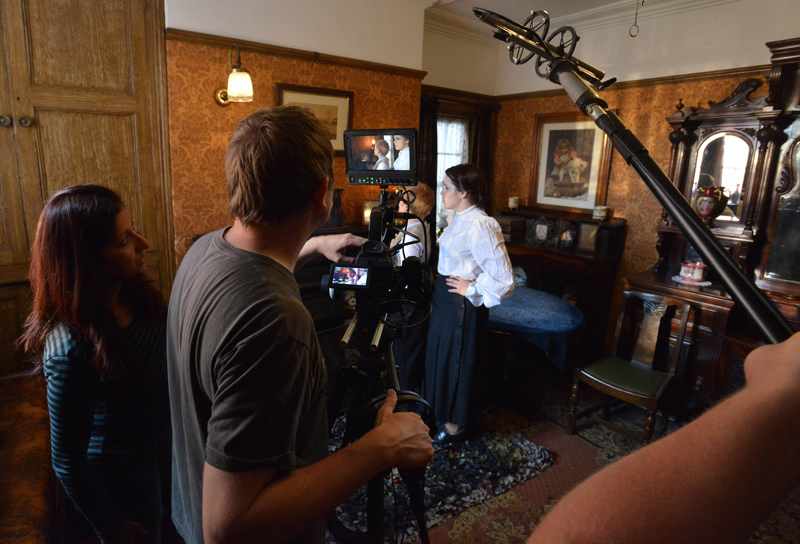 During the war, families reacted in different ways when discovering their loved one had been executed. While there were those who reacted with shame, others spoke openly, with one lady even writing to a local newspaper about the execution of her husband. I was cautious when contacting their descendants, as it was clear how angry the subject made people today, with some family members even showing anger towards their ancestor. I used family history websites to contact the family members of executed solders, only approaching those who spoke openly about their ancestor’s story. Those I did contact all responded to my messages and we were able to share information, I was even given a photograph of Lance Corporal William Moon to use for the exhibition.
During the war, families reacted in different ways when discovering their loved one had been executed. While there were those who reacted with shame, others spoke openly, with one lady even writing to a local newspaper about the execution of her husband. I was cautious when contacting their descendants, as it was clear how angry the subject made people today, with some family members even showing anger towards their ancestor. I used family history websites to contact the family members of executed solders, only approaching those who spoke openly about their ancestor’s story. Those I did contact all responded to my messages and we were able to share information, I was even given a photograph of Lance Corporal William Moon to use for the exhibition.
After three months of research we began work on the film. We decided the story of the executed soldier should be fictional, but it is based on several real life accounts. It was a daunting task to write a script about such a sensitive subject, to try and imagine how a soldier might feel the night before an execution, the reaction of his family and how a soldier in the firing party would be affected. It was also important to make the film as balanced and realistic as possible, to control how much personal opinions influenced the writing, particularly as the intention was to take the film into schools as an educational resource.
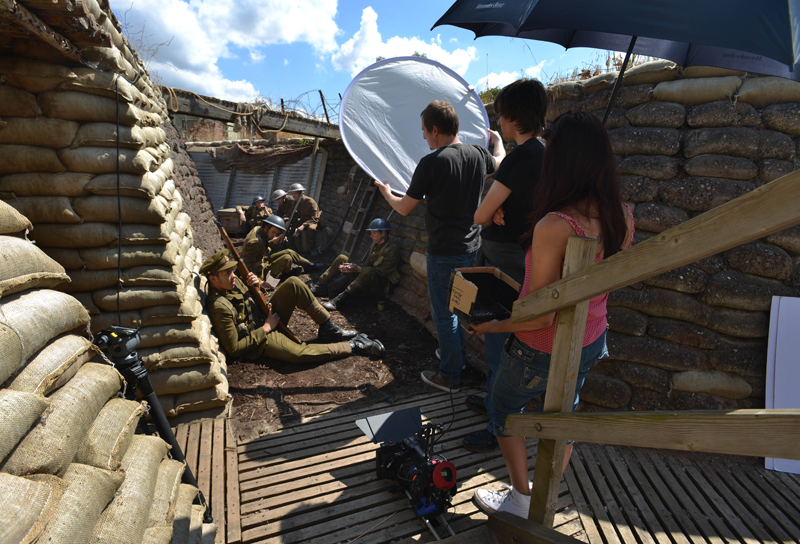 Filming took place over a week in July. We were very fortunate to discover the trench recreation at the Staffordshire Regiment Museum. We had only a day to film the trench scenes and, as it was summer, the boys playing soldiers experienced what it may have been like in the trenches, wearing full uniform, with little shelter, in the heat. We also filmed at the Willenhall Lock Museum, a house that has been preserved as it would have been in the early 1900s. Having such great locations to use certainly helped in telling the story.
Filming took place over a week in July. We were very fortunate to discover the trench recreation at the Staffordshire Regiment Museum. We had only a day to film the trench scenes and, as it was summer, the boys playing soldiers experienced what it may have been like in the trenches, wearing full uniform, with little shelter, in the heat. We also filmed at the Willenhall Lock Museum, a house that has been preserved as it would have been in the early 1900s. Having such great locations to use certainly helped in telling the story.
A group of youth theatre members volunteered to be a part of the exhibition team. They each chose a subject to do their own research and through a series of sessions fed back to the group what they had discovered. The exhibition was to focus on our different strands of research of the four soldiers whose stories we had explored.
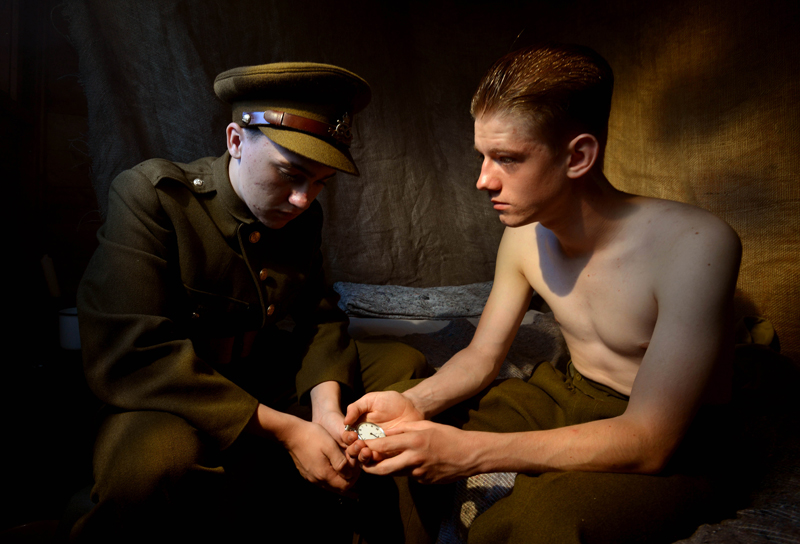 What surprised me most, during the research process, was discovering just how controversial this topic is, one hundred years later. There were those unwilling to discuss the executions, thinking it unnecessary to speak about it while others felt the 2006 pardon should not have taken place. A few have even suggested the soldiers deserved execution, even soldiers with clear symptoms of shell shock. This is an attitude I have found difficult to comprehend as who could truly know what those soldiers experienced. Realising just how much anger the subject still generated made it an intimidating subject to tackle, particularly when approaching historians and others for information. However everyone at the youth theatre is pleased with the results of the project and we have received positive feedback of the film and exhibition. The tragic stories we learned throughout the project will stay with us all. Most of the young people involved with the project and those we visited in schools knew very little or nothing at all about the executions. It has been great to have the opportunity to discover more about this controversial subject and to then be able to educate others with the information I have learned.
What surprised me most, during the research process, was discovering just how controversial this topic is, one hundred years later. There were those unwilling to discuss the executions, thinking it unnecessary to speak about it while others felt the 2006 pardon should not have taken place. A few have even suggested the soldiers deserved execution, even soldiers with clear symptoms of shell shock. This is an attitude I have found difficult to comprehend as who could truly know what those soldiers experienced. Realising just how much anger the subject still generated made it an intimidating subject to tackle, particularly when approaching historians and others for information. However everyone at the youth theatre is pleased with the results of the project and we have received positive feedback of the film and exhibition. The tragic stories we learned throughout the project will stay with us all. Most of the young people involved with the project and those we visited in schools knew very little or nothing at all about the executions. It has been great to have the opportunity to discover more about this controversial subject and to then be able to educate others with the information I have learned.
Laura Sambrooks
-
You may be aware of this, but 309 of the soldiers who were shot included 3 who were executed for mutiny. The campaign to pardon the men did not include the 3 muntineers as it was expected they would be successful – mutiny was a capital offence at the time. They were Jack Braithwaite, William Lewis and, I believe John James Dennis. However, when the family of Jack Braithwiate, a New Zealand man, visited the Arboretum in middle of 2016 they were concerned to see their ancestor was not listed and there was no named stake for him. Investigation revealed that 309 men were listed on the pardon, the 3 mutineers having been included. Their names were added to the memorial. On 29 October 2017, one hundred years exactly to the date of the execution of Braithwaite and William Lewis, (Dennis having been executed earlier in 1916) a service of re-dedication was held at the Arboretum, to which Jack Braithwaite’s family were present. (I am not sure if members of the families of the other two men were present). The service was organised by Andy deComyn, the artist who made the beautiful and moving statue at the centre of the memorial in the Arboretum.
Submit a Comment


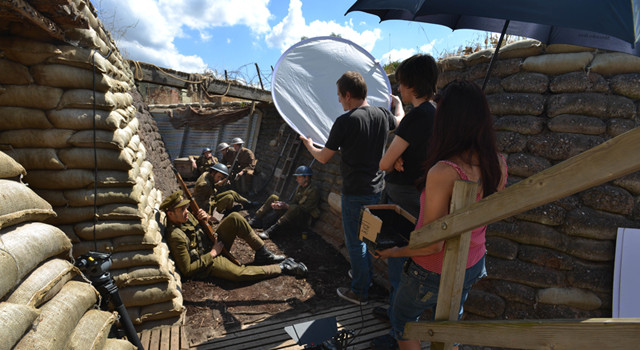
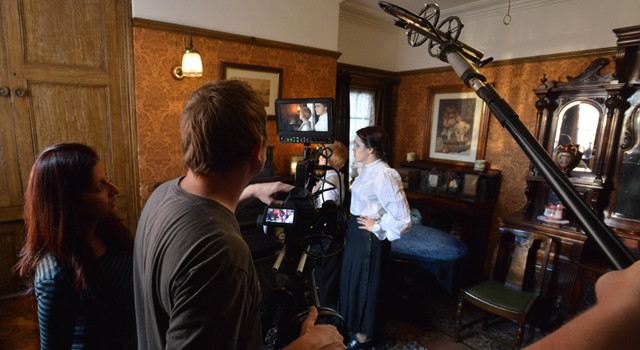
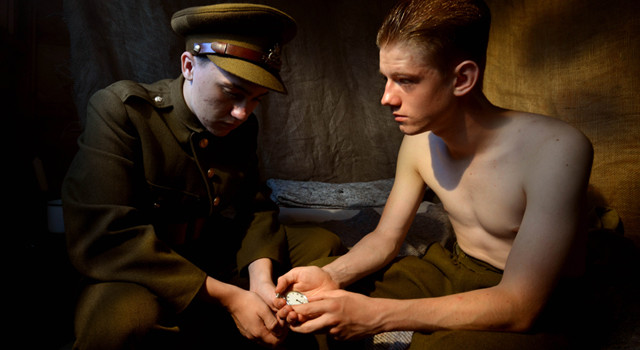

Comments